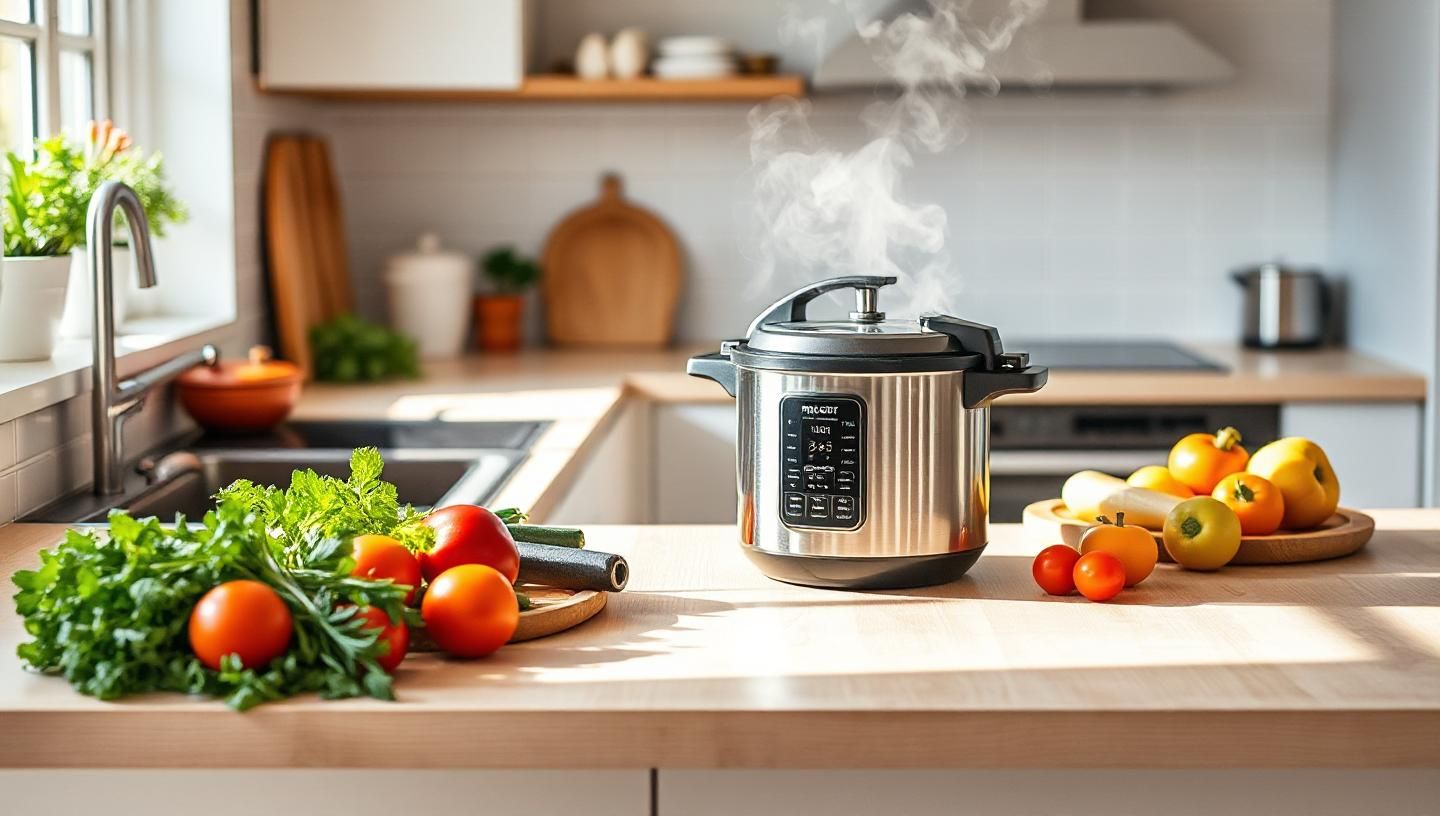Physical Address
304 North Cardinal St.
Dorchester Center, MA 02124
Physical Address
304 North Cardinal St.
Dorchester Center, MA 02124

Pressure Cooker: Learn the essential tips and tricks for using a pressure cooker effectively to save time and cook delicious meals with our comprehensive guide.
How To Use A Pressure Cooker
Hey there, food enthusiasts! I’ve been obsessed with pressure cookers for years and learned a ton along the way. Whether you’re a kitchen newbie or a seasoned chef, mastering the art of using a pressure cooker can transform your cooking experience. It’s like having a magic wand that speeds up cooking time while locking in flavors and nutrients. So, let’s dive into the world of pressure cooking, where I’ll share my personal journey, tips, and tricks to make you a pro in no time.
When I first got my hands on a pressure cooker, I was skeptical. Could this really be the game-changer everyone was talking about? After my first batch of perfectly cooked beans in record time, I was sold. The benefits of using a pressure cooker are numerous. Not only does it save time, but it also preserves the nutritional value of food, making it a healthier option. Plus, the energy savings are real; it uses less electricity than traditional cooking methods. I’ve tested this myself and noticed a significant reduction in my utility bills.
Picking the best pressure cooker can feel overwhelming with so many options out there. From electric models like the Instant Pot to traditional stovetop versions, each has its charm. I’ve studied this topic for years and found that electric pressure cookers are fantastic for beginners due to their preset functions and safety features. However, if you’re like me and enjoy a bit more control, a stovetop pressure cooker might be your go-to. Here’s why this works, based on what I’ve learned: electric models are more user-friendly with digital displays, while stovetop models offer a tactile experience with manual pressure adjustments.
Now, let’s get into the nitty-gritty of how to use a pressure cooker. First, ensure all parts are clean and in place. I’ve made the mistake of forgetting the sealing ring once, and trust me, it’s not fun when your cooker doesn’t seal properly. Here’s a practical tip: always check the rubber gasket for any cracks or wear before you start.
Fill your pressure cooker with the ingredients, but remember, never overfill it. The general rule is to fill it to about two-thirds for most foods, and half for foods that expand like beans or grains. Add your liquid; this is crucial as the steam from the liquid creates the pressure. I’ve tried this myself and noticed that too little liquid can lead to a burn notice, especially in electric models.
Once everything is set, secure the lid and set the pressure release valve to ‘sealing’. If you’re using an electric pressure cooker, select your cooking mode or manually set the time. For stovetop models, bring it to high heat until it reaches full pressure, then reduce to maintain that pressure. I’ve found that pressure cooking times can vary, but a good rule of thumb is to start with less time than you think; you can always cook longer if needed.
Let’s talk about some fun recipes. Pressure cooker recipes are a treasure trove of quick meals. For instance, I love making a hearty beef stew in my pressure cooker. The meat becomes tender in about 35 minutes, something that would take hours in a regular pot. Here’s a mistake to avoid: don’t open the lid too soon. Always let the pressure release naturally or use the quick release method if your recipe allows.
Safety is paramount when dealing with pressure cookers. I’ve always been cautious, especially after hearing horror stories of mishaps. Always ensure the pressure release valve is clear, and never force the lid open if it’s stuck. Here’s a safety tip: when releasing pressure, use a long utensil to move the valve to avoid steam burns. Also, keep your face away from the steam when it’s releasing. I’ve adapted this from a classic method of kitchen safety, ensuring my cooking sessions are accident-free.
Maintaining your pressure cooker is as important as using it. After each use, I clean mine thoroughly. The sealing rings, in particular, need attention as they can absorb flavors and odors. I replace them every 18-24 months or when they start to show signs of wear. Here’s a cleaning hack: soak the sealing ring in a mixture of baking soda and water to remove stubborn smells.
Once you’re comfortable with the basics, let’s explore some advanced techniques. Pressure cooking isn’t just for soups and stews. I’ve experimented with pressure cooker desserts like cheesecake, which comes out creamy and delicious in about 30 minutes. Or try pressure cooker steaming for vegetables; it retains their vibrant color and nutrients better than boiling.
For those interested in meal prep, pressure cookers are a godsend. I’ve used mine to prepare meals for the week, cooking large batches of rice, beans, or even chicken stock. Here’s why this works: pressure cooking for families means less time in the kitchen and more time enjoying meals together.
Using a pressure cooker has revolutionized my kitchen routine. From the time-saving benefits to the delicious outcomes, I’ve shared what works for me—hope it helps you too. Remember, whether you’re cooking for one or for a crowd, a pressure cooker can handle it all with ease. Keep exploring, keep cooking, and let your pressure cooker be your kitchen companion in creating quick, nutritious, and flavorful meals. Happy cooking!